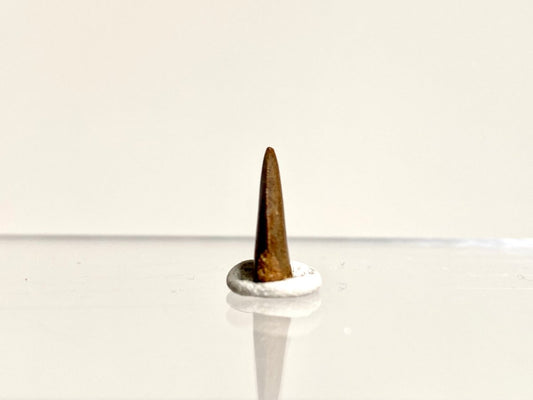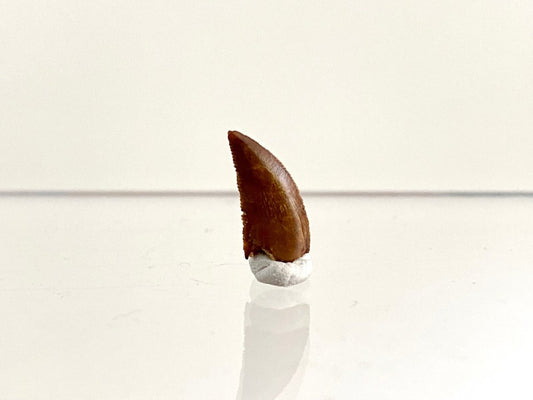Collection: Abelisaur Fossils for sale – Predators of the Cretaceous
Abelisaurs were a group of theropod dinosaurs that lived during the Late Cretaceous (100–66 million years ago). These fearsome predators were especially common in Gondwana (South America, Africa, Madagascar, India and Morocco), where they occupied the role of apex hunters after the decline of larger carnivores.
Our shop offers Fossil teeth with sharp serrations that reveal their predatory nature.
-
Abelisaurus species fossil tooth (0.53"), Kem Kem, Morocco
Regular price €28,95 EURRegular priceUnit price / per -
Abelisaurus species fossil tooth (0.54"), Kem Kem, Morocco
Regular price €28,95 EURRegular priceUnit price / per
About Abelisaurus
Exploring the Fearsome Predators of Gondwana
Abelisaurs were a group of carnivorous theropod dinosaurs that roamed the ancient supercontinent of Gondwana during the Cretaceous period, approximately 100 to 66 million years ago. These formidable predators are characterized by their robust skulls, short arms, and powerful hind limbs, making them apex predators in their respective ecosystems.
Physical Characteristics
Abelisaurs were medium to large-sized theropods, with some species reaching lengths of up to 30 feet (9 meters) or more. They had stout bodies, short forelimbs with reduced fingers, and massive skulls equipped with rows of sharp teeth. One of the most distinctive features of abelisaurs was their short, deep skulls, which often featured elaborate ornamentation such as bumps, crests, or horns. These features likely played roles in species recognition, display, or combat.
Habitat and Distribution
Abelisaurs were primarily found in the southern continents that once made up the supercontinent of Gondwana, including South America, Africa, Madagascar, India, and possibly Australia. Fossil discoveries suggest that they inhabited a wide range of environments, including forests, plains, and coastal regions, indicating a diverse array of ecological adaptations among different species.
Feeding and Behavior
As carnivorous dinosaurs, abelisaurs were apex predators, preying on a variety of animals including small to medium-sized dinosaurs, reptiles, and possibly even juvenile sauropods. Their powerful jaws and robust skulls enabled them to deliver devastating bites to their prey, while their strong hind limbs allowed them to pursue and subdue fast-moving targets. Some abelisaur species may have also scavenged carcasses, taking advantage of available food sources in their environments.
Evolutionary Significance
Abelisaurs belong to the infraorder Ceratosauria, a diverse group of theropod dinosaurs that flourished during the Mesozoic era. They are closely related to other famous theropods such as the ceratosaurs and the more well-known tyrannosaurs. Abelisaurs represent a unique branch in the evolutionary tree of theropod dinosaurs, characterized by their distinctive skull morphology and ecological adaptations. Their presence in the fossil record provides valuable insights into the diversity and evolution of carnivorous dinosaurs during the Cretaceous period.
Cultural Impact and Discovery
Abelisaurs have captured the imagination of scientists and enthusiasts alike since their discovery in the early 20th century. Fossil remains of abelisaurs have been found in various locations around the world, with some of the most significant discoveries coming from Argentina, Morocco, Madagascar, and India. These fossils have provided valuable information about abelisaur anatomy, behavior, and ecology, enriching our understanding of the ancient ecosystems they inhabited.
Abelisaurs were fearsome predators that ruled the ancient landscapes of Gondwana during the Cretaceous period. Through their distinctive anatomy, ecological adaptations, and cultural significance, abelisaurs continue to captivate the imagination of scientists and enthusiasts worldwide, inspiring further research and exploration into the fascinating world of prehistoric life.
Abelisaur Fossils for sale – Predators of the Cretaceous




